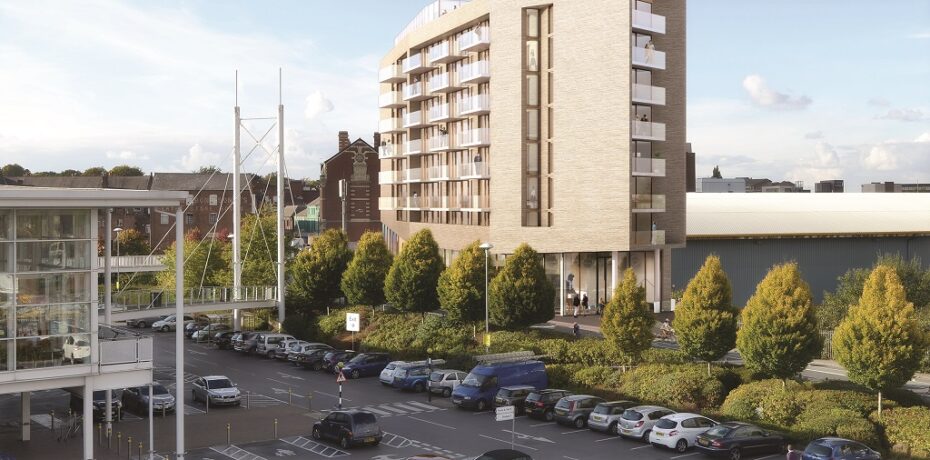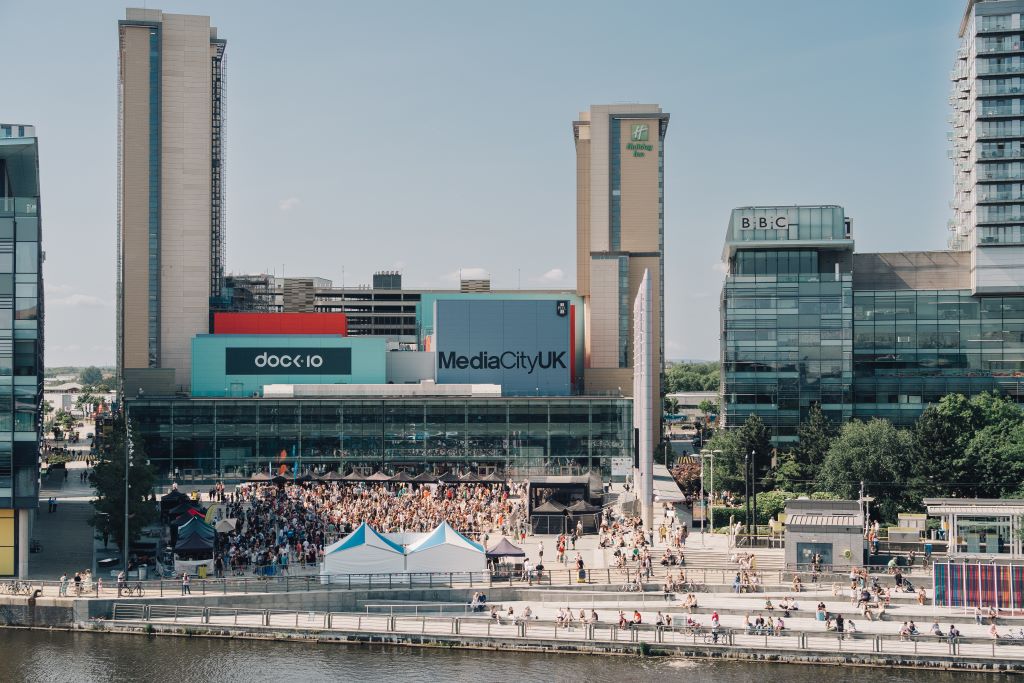The Subplot
The Subplot | Nikal, inflation worries
Welcome to The Subplot, your regular slice of commentary on the North West business and property market from Place North West.
THIS WEEK
- Reboot for Nikal: Manchester-based developer with schemes in Blackpool and Altrincham is radically reshaped by its new boss
- Ride the tiger: inflation is rising steadily, particularly in the construction sector. The North West property industry is waking up to the risks

CONTROL ALT DELETE
Nikal resets at Altair
Loo roll millionaire Alan Murphy has tightened his control over developer Nikal, and backed new boss Richard Fee’s asset sales and slimmed team. What does it mean for the firm’s Altrincham and Blackpool schemes?
Nick Payne, who co-founded Nikal with Alan Murphy in 2003, stepped down earlier this year. The departure of the developer’s chief player left four big schemes in the balance. The local stars are in Blackpool, where a £300m regeneration of the Central Station site is just beginning, and Altrincham’s Altair project, now well into its second decade of slow-moving disappointment. Two monster schemes in Birmingham also feature. Subplot can now reveal Nikal’s post-Payne reset and change of direction.
Murphy’s law
The background is that Alan Murphy has upped his shareholding after buying out Payne: it is now 97.5%, as documents due to be filed any day by parent Nikal (Jersey) Ltd, will show. Murphy’s shareholding was as low as 67%. Rumours that Murphy was stepping away turn out to be very far from the mark.
Clear out
Richard Fee, the ex-Henderson Global Investors, ex-Dunedin, ex-DTZ man now hired to take the chair, has given Nikal a serious shake-up. Finance director Steve Robinson has gone, head of construction Mark Hudson’s contract ended, and James Payne, brother of Nick, is no longer MD at Hillcrest, the housebuilding subsidiary. Hillcrest has been mothballed. Other sites are being sold. The prize (bids closed last week) is the one-acre site close to Kings Dock acquired in 2019. A £100m leisure-led scheme had been envisaged, but that’s now history.
FY1 and WA14
The new Nikal will be all about big urban regeneration schemes backed by some third-party funding and internal resources, along with some fancy footwork on the asset management opportunities. For Blackpool this is good news. Enabling work is moving ahead, a planning application will be with the council within weeks, and Nikal is in the funding market for the car park development. Altrincham is more complicated.
Northern Star?
The Altair scheme, named after a super-bright star, has seriously failed to shine. The first consent in 2008 was for an Ian Simpson-designed mega project including 100,000 sq ft of offices, a hotel, and 80,000 sq ft of retail and leisure. This was nixed by the Great Financial Crash. In 2010 a revised scheme including the hospital won consent, and work was due to begin soon after. Since then Altair has been through various changes of contractor and direction, and got more-or-less nowhere. By 2019 Nikal people were describing progress as “disappointing.” Locals were using much fruitier language to make the same point.
I’m looking at you
The Altrincham & Bowdon Civic Society points a polite finger at both Trafford council and Nikal. Judie Collins, the society’s chair, tells Subplot: “It’s such a valuable site, it doesn’t make sense to let it rest, and it is important decisions are made about Altair because what happens there will affect the future of other town centre sites like the Stamford Quarter and Grafton Centre on, for instance, residential provision. It just doesn’t look like there’s been much foresight.”
The maths
Fee doesn’t seem awfully impressed, either. Pre-sales on apartments agreed at low 2019 prices, but a commitment to build at higher 2021 construction prices, is nobody’s idea of a great development scenario. On top of this, there’s the legalities to contend with. Fee explains: “We have some fantastic real estate in Altair but the legal structure around it is extremely complicated. We have had discussions with the council about changing it but there doesn’t seem much appetite so we are trying to deliver a scheme to meet Trafford’s requirements within the existing structure. We understand comments about tardiness of delivery on Altair, but there are complications.”
Fingers out, please
Local observers hope the council can do something to help, maybe something dramatic like change the development agreement. Asked by Supblot what comes next, a Trafford council spokesperson simply re-iterated that it has an agreement with Nikal. The council has yet to approve a newly-submitted funding strategy for the Altair first phase of 58 apartments, 29 of which are pre-sold. Nikal is also seeking a delivery partner (Hillcrest won’t be doing it). If that goes well work on site is due to begin later this year, followed by blocks two and three on the southern part of the site.
Stretch marks
The new strategy will see Nikal transformed into something more like an investment vehicle. In-house teams have been replaced with outsourcing (to CBRE, mainly). There will still be the big projects, like Blackpool and the two Birmingham monsters (Masshouse and the residential-meets-workspace-meets-Peaky Blinders film studio tie-up in Digbeth). Third-party funding will be needed, and on the whole the big projects will be traded-out once built, with new big projects found to replace them. Fee has irons in the fire.
Mix’n’match
There will also be more picking and mixing, and that could be the novelty. Fee explains: “We tried to do too much, and were spread too thin, so we’re recycling capital and shrinking the team and asset-base to match. And then we’ll refocus, looking to create an investment platform working with assets on active management, sitting somewhere between the development and investment worlds.”
Carpe diem
Grabbing the moment is the new take-your-time. This includes moving fast on the big schemes while also grabbing undervalued assets – shopping centres, pubs, much else – on the time-honoured principle of buying at the bottom of the market. “We see some real opportunities in some sectors,” says Fee. “There are more opportunities to reposition assets than there have ever been. And it is easier to buy and fund standing assets than vacant sites, so we’re keen to create an income-producing portfolio.”
Big beasts
Nikal is a big player in Birmingham: it has made, and is making, a serious impression (and lots of money, thanks to a pre-sale to Grainger) at the Masshouse build-to-rent scheme. A short walk away a 40-acre tie up with Peaky Blinders creator Steven Knight is in its early days, but could be groundbreaking. The Mercian Studios concept will mix film and TV production with creative workspace and related living in a way that hasn’t been seen before. But in the North West, its home turf, Nikal hasn’t made such a splash. The new sense of direction could change that fast.
Conclusion: sometimes a restart isn’t a bad idea.
DRIVING THE WEEK
 We need to talk about inflation
We need to talk about inflation
The inflation tiger is stirring. UK inflation doubled to 1.5% in April and there are ominous warnings of price rises further back in the supply chain, particularly in the construction sector. Should North West property be worried?
As we discovered in March 2020, the world can suddenly turn upside down. Inflation hasn’t been an issue in the UK since the 1970s and 80s. A whole generation of developers and property investors have written their viability assessments and appraisals assuming inflation isn’t a thing, and in the unlikely event that it was, property is a hedge against inflation. A hedge meaning its value keeps pace with inflation, and if you’re lucky, maybe does better even than that. So there’s nothing to worry about. Is this comforting view correct?
Cost-push, demand-pull
Andy Haldane, the chief economist at the Bank of England, has been banging on about rising inflation risk for some time. His concern appears to be that we risk both cost-push and demand-pull inflation simultaneously. That means lots of additional demand in the economy (pent up from lockdown, fuelled by furlough savings). Thanks to pandemic-related disruption to employment and manufacturing it also means not as much supply of everything from steel to bar staff and waiters. Lots of demand plus less supply equals shortages and supply friction equals price rises.
Look!
You can already see this happening: the IHS Markit/CIPS flash composite Purchasing Managers’ Index (PMI) for May showed input prices are rising, because output can’t keep pace with demand. Another way of measuring risk is to look at our old friend the Phillips curve. If unemployment goes up inflation ought to go down. But unemployment is up in both the UK and US, and so is inflation. This suggests something got broken by Covid. Which is a bit worrying.
The Biden effect
On top of the potential for domestic inflation, we could import inflation from the US or China. President Biden launched a $1.9tn stimulus package based on the assumption that the pandemic did serious economic damage needing Titanic amounts of mending. But what if Covid didn’t damage the economy as much as everyone thought? US inflation is already at a 16-year high of 4.2%. If the US experiences a price shock then the UK will have one, too. The same goes for China, but things there have been so strange for so long it is not easy to say.
What if
Normally a supply-demand imbalance corrects itself – inflation is a blip – and that is what some people expect in 2021/22 as the Covid effect washes through the UK economy. That’s the consensus view. But the happy correction depends on economies working smoothly and normally, and perhaps the post-quantitative easing, post-Covid, super-stimulated new normal is…abnormal? That Phillips curve problem points to something of the kind.
Construction costs
The big immediate worry is construction costs, which have been rising steeply amid shortages of almost everything: plywood, gravel and particle board are currently problematic. Official figures show monthly surges of up to 7.8%, but price growth is much higher for some items. Barry Roberts, North West regional managing director of contractor Morgan Sindall, is keenly aware of the pricing issue. Sealants, a basic in the construction business, are getting pricey, he says, and they are watching market movements daily. “Some of the price increases are stark. Construction inflation is below 10% for now, but we’re seeing 30% price increases for some materials. It’s too early to say how this will impact tender prices, and a lot of it comes down to how sub-contractors react.”
All go up
Investors and developers are also watching with interest. David Lathwood, now an investor running Pitalia Real Estate, says: “The big concern isn’t general inflation, but construction cost inflation. We have to hope that inflation affects all elements of the development and investment space in roughly equal measure, so that we can live with greater costs in the short term so long as we get the benefit of greater value.”
Hedging and ditching
Lathwood has been around long enough to remember inflation from last time. “In the past, inflation has been a positive thing for speculators. Rental growth inflation and land value inflation have been quietly welcomed by property speculators,” he says. But don’t get too carried away. The Investment Property Forum, a consortium of 24 big investors and intermediaries, looked at this in 2011. They analysed 2006-2009 and asked if property was indeed a hedge. They discovered it kept pace with economic growth, but that equities were a better hedge against inflation. They also pointed out cost-push inflation (which we seem to be having) is particularly hurtful for property, and that depreciation, financing and maintenance costs get complicated. You can read the full report here.
Yield curve
On the other hand, if as well as getting cost-push inflation we are also getting demand-pull inflation (all those furlough savings and bounce back loans coming into play) the 2011 reports suggests there’s an opportunity for risk-friendly investors to take a rather larger punt on property than they might otherwise. Chris Cheap, Avison Young regional managing director, seems to be thinking along these lines. He’s keeping an eye on inflation “because of the obvious impact on interest rates but also because of asset allocation with higher inflation rates equalling higher bond yields and in turn potentially creating upward pressure on yields – that is if the rental picture remains the same,” he says. “Inflation will be a concern if it’s going to be sustained and likely to drive policy / rates / bond yields … so we’re watching it, but we don’t think it will become a longer term issue, yet.”
Already happening
Stuart Keppie, partner at Keppie Massie, can already see it. “Some clients are beginning to consider the higher return and riskier investments options in preference to the lower yielding and safe options,” he says. Keppie, too, has seen inflation at work before. It sent waves – good and bad – through Liverpool property in the 1980s. “Inflation has been a double-edged sword. On the one hand it has acted as a stimulus to rental and capital growth in some instances where markets have otherwise been stagnant but conversely it has driven costs up, including funding, to stifle development and investment in property and created instability in the market,” he says.
Complicated much
It is still early days. Inflation remains below the official Bank of England target of 2% and maybe that is where it will stay. If inflation comes it will not leave property untouched, not least because the world is now more complicated. Last time the UK had proper grown-up scary inflation much real estate was on 25-year institutional leases in sectors with sound, long-term, economic futures. Today, nobody is sure if office workspace has a future, and the 25-year lease is as dead as the dinosaurs. Maybe more exposure to the real world means more risk when consumer price inflation strikes? Mat Oakley, head of research at Savills, thinks probably not. He says: “Investors who want to buy long-term income can. Build-to-rent is granular long-term income in the way shopping centres used to be. So whilst inflation might put pressure on developers’ margins, and inflation is definitely an issue, I don’t think it’s worrying.”
Conclusion: tigers are not pets. You have been warned.
The Subplot is brought to you in association with Cratus, Bruntwood Works, Savills and Morgan Sindall.






material producers are sending the industry to hell in a handcart, how can you price a job when the price is invalid the next day?
By Anonymous